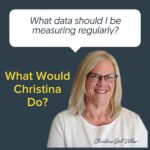Q: I recently started a new role and I’m starting from scratch building a complete and effective MarTech stack. Can you share your favorite tools and why?
MarTech. It’s not a sexy topic, but these tools and systems are needed to accomplish your job. They help you build and run programs as well as manage content and contact strategy. They’re also instrumental in measuring the impact of the programs your team is implementing and showing your true value. Let’s take a look at what tools are must-haves vs. nice-to-haves.
Must-Have MarTech Tools
No MarTech stacks are the same, but they need to cover the fundamentals.
- Marketing automation and campaign management: Marketo, HubSpot
- CRM: Salesforce, Hubspot
- Analytics: From your CRM, marketing automation tool, Google Analytics
With these three tools, you can build and run programs, manage program performance, route leads, and measure data such as conversion, revenue and more. The benefit of these tools is that they are available at different price points (Google Analytics is FREE) and can be customized to fit your company’s needs. If you’re on a tight budget, having these tools in place and set up to reflect your workflows and goals, you’re in a good place.
What areas can benefit from MarTech?
Everything marketing touches can benefit from MarTech. Here’s a breakdown of each area of focus and the tools I like to use.
- Advertising and Promotion: Identify the type of content you’re managing (i.e. search and social vs. mobile and print ads). Be sure any program you choose provides significant analytics. A multipurpose program is always a safe choice in case priorities change.
- AdRoll or Criteo: focused on D2C transnational sales
- Taboola: manages paid content and pay-per-click programs
- Social and Relationships: This is one of my favorite sections. It includes ABM, chat, communities, event and webinar management, social media marketing, and reviews.
- Demandbase or Radius: focuses on a few big potential accounts
- Drift and Intercom: chat systems that integrate nicely across websites and channels and have a higher degree of automation
- ON24, Webex, Marketo: good for events and webinars (pro tip: check the integration page of your primary CRM to be sure it integrates with these tools)
- Hootsuite and Buffer: automate social posting and monitoring
- Content: Content is always fun! Find a platform that helps you plan, create, and disseminate your content.
- BuzzSumo and Contently: manages and measures content
- Uberflip: focuses on personalized content to the audience
- Turtl: creates interactive content
- Bynder, Canto, Capterra: digital asset management tools which are helpful if you have a large number of assets
- Commerce, E-commerce, and Sales: These are tools that help you, your affiliates, your partners, and VARSs sell your product. They can help partners hand over leads, track programs, and track the long-term status of won customers.
- ChannelAdvisor: focuses on companies in the e-commerce space
- Amazon, BigCommerce, Shopify: e-commerce and retail store selling platforms
- Apttus: quote-to-cash solution
- Management: Communication is key, so finding a communication channel that helps teams work seamlessly will be the most productive management tool.
- Slack and Zoom: daily communication channels
- Atlassian, Wrike, Productboard: ticketing tools
- Asana, Monday, Airtable: project management
Things To Remember
These tools are essential for marketing professionals working at B2B and SaaS organizations and are expensive. Be sure you choose the right tools for your company’s goals and are reflective of your customers’ journey, and help you do your job. Take the time to optimize each program to fit your systems. Don’t lean on IT and operations to do everything — you need to understand these platforms in and out for them to work best.
It’s good to think of MarTech as the key piece of technology that brings all of the touchpoints in the customer journey together. All of your systems should talk to each other. You should also have one “master tool” that all other tools feed into — this is usually your CRM.
Want more advice? I’ve got plenty! Check out some of the other situations I’ve chimed in on, or tell me about a situation you need help with.



